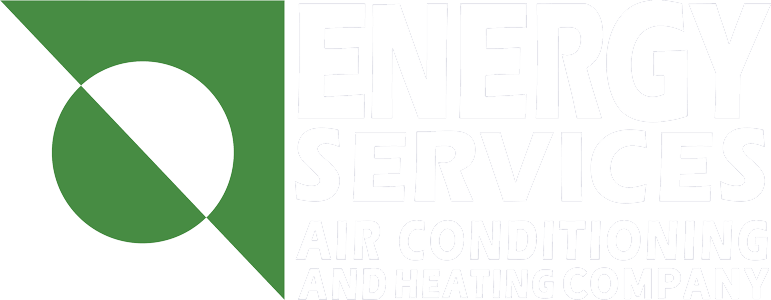Understanding When Furnace Replacement Becomes Essential in Maywood
Determining the right time for furnace replacement requires careful evaluation of multiple factors that affect your heating system’s performance and efficiency. In Maywood, IL, where winter temperatures regularly drop below freezing and heating demands remain high from October through April, a failing furnace can quickly transform from an inconvenience into a genuine emergency. We recognize that age serves as one of the most reliable indicators for replacement timing. Most furnaces operate effectively for 15 to 20 years with proper maintenance, but as systems approach this threshold, repair frequency increases dramatically while heating efficiency decreases substantially. When your furnace begins requiring repairs that cost more than half the price of a new system, or when monthly heating bills spike despite consistent usage patterns, replacement becomes the most economically sensible decision.
Beyond age considerations, safety concerns often necessitate immediate furnace replacement. Carbon monoxide leaks, cracked heat exchangers, and frequent pilot light failures represent serious hazards that compromise your family’s wellbeing. Modern furnaces incorporate advanced safety features including sealed combustion chambers, electronic ignition systems, and multiple fail-safe mechanisms that older units lack. Additionally, strange noises like banging, squealing, or rattling often indicate internal component failure that, while repairable, suggests broader systemic deterioration. At Energy Services Air Conditioning and Heating Company, we’re proud to provide the best in HVAC and indoor air quality services to residential customers throughout Chicago and the surrounding communities, ensuring that Maywood residents receive honest assessments about whether repair or replacement serves their best interests.
Modern Furnace Technologies Available for Maywood Homes
Today’s furnace technologies offer remarkable improvements in efficiency, comfort control, and operational reliability compared to systems installed just a decade ago. Variable-speed blowers represent one of the most significant advancements, allowing furnaces to adjust airflow based on heating demands rather than operating at full capacity constantly. This technology reduces temperature fluctuations, minimizes noise levels, and can decrease heating costs by up to 40 percent compared to single-speed models. Two-stage and modulating gas valves provide similar benefits by adjusting fuel consumption to match heating requirements precisely, preventing the energy waste associated with frequent cycling while maintaining more consistent indoor temperatures throughout your Maywood home.
Smart thermostat compatibility has revolutionized how homeowners interact with their heating systems. Modern furnaces integrate seamlessly with Wi-Fi enabled thermostats that learn your schedule, adjust temperatures automatically based on occupancy, and provide detailed energy usage reports accessible from your smartphone. These systems can reduce heating costs by 23 percent on average while ensuring optimal comfort when you’re home. Additionally, advanced filtration options including HEPA filters and UV light purification systems work in conjunction with new furnaces to improve indoor air quality significantly, removing allergens, bacteria, and viruses from circulated air.
Selecting the Right Furnace Size and Efficiency Rating
Proper furnace sizing remains critical for achieving optimal performance and efficiency in Maywood’s climate conditions. Oversized furnaces cycle on and off frequently, creating uncomfortable temperature swings while increasing wear on components and energy consumption. Undersized units run continuously without adequately heating your home, leading to excessive utility bills and premature system failure. We perform detailed load calculations considering your home’s square footage, insulation levels, window quality, ceiling height, and sun exposure to determine the precise heating capacity required. This calculation process, known as Manual J, ensures your new furnace delivers consistent comfort without wasting energy or experiencing unnecessary strain.
Annual Fuel Utilization Efficiency (AFUE) ratings indicate how effectively a furnace converts fuel into heat. While older furnaces typically achieve 56 to 70 percent AFUE, modern high-efficiency models reach 95 to 98 percent AFUE, meaning nearly all fuel consumed transforms into usable heat. In Maywood’s climate, where heating systems operate approximately 5,000 hours annually, upgrading from a 70 percent to 95 percent AFUE furnace can save homeowners $500 to $800 per year on heating costs. Whether you need to find the right HVAC system for a new home or want to have maintenance completed on your current system, you can count on us to recommend efficiency levels that balance upfront investment with long-term operational savings based on your specific circumstances and budget considerations.
Professional Installation Process and Timeline
Professional furnace installation involves multiple critical steps that ensure safe, efficient operation for years to come. The process begins with careful removal of your existing furnace, including proper disposal of refrigerants and components according to environmental regulations. We then inspect and modify existing ductwork as needed, sealing leaks and ensuring proper sizing to accommodate your new system’s airflow requirements. Gas line connections require meticulous attention to prevent leaks, while electrical wiring must meet current code requirements for amperage and circuit protection. Venting system installation proves particularly crucial, as improper venting can cause carbon monoxide buildup or reduced efficiency.
- Initial system assessment and removal: typically requires 2 to 3 hours
- Ductwork modifications and sealing: adds 1 to 2 hours depending on accessibility
- New furnace positioning and connection: takes approximately 3 to 4 hours
- System testing and calibration: requires 1 to 2 hours for thorough verification
- Cleanup and customer education: concludes the 8 to 12 hour installation process
Following physical installation, comprehensive testing ensures proper operation across all heating stages, verifies correct gas pressure, confirms adequate airflow through all registers, and validates safety control functionality. We also program thermostats, demonstrate system operation, and explain maintenance requirements to maximize your investment’s longevity and performance.
Financial Considerations and Available Incentives
Furnace replacement represents a significant investment that typically ranges from $3,000 to $7,500 depending on system capacity, efficiency rating, and installation complexity. However, numerous financial incentives help offset these costs while accelerating return on investment through energy savings. Federal tax credits currently offer up to $600 for qualifying high-efficiency furnaces meeting specific AFUE thresholds. Illinois utilities including ComEd and Nicor Gas provide rebates ranging from $200 to $1,000 for energy-efficient heating equipment installations. Additionally, many manufacturers offer seasonal promotions that can reduce equipment costs by 10 to 20 percent when combined with professional installation.
Financing options make furnace replacement accessible regardless of immediate budget constraints. We work with multiple lending partners offering competitive rates and flexible terms that often result in monthly payments lower than the energy savings achieved through improved efficiency. Some financing programs feature zero percent interest for qualified buyers, allowing you to spread costs over 12 to 60 months without additional charges. When calculating total replacement costs, consider that new high-efficiency furnaces typically reduce heating expenses by 20 to 40 percent, meaning the system partially pays for itself through operational savings while providing superior comfort and reliability throughout Maywood’s demanding winter months.







